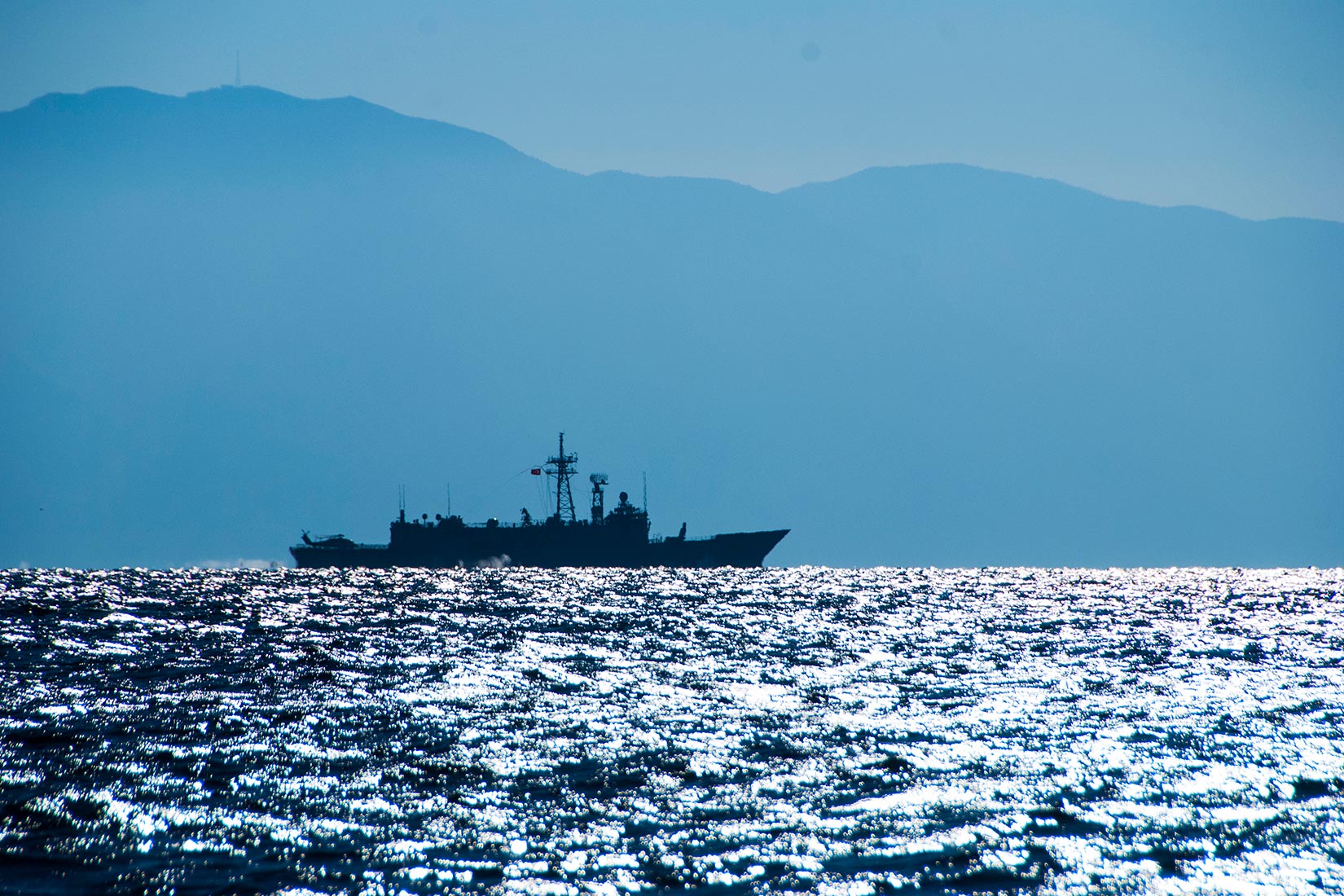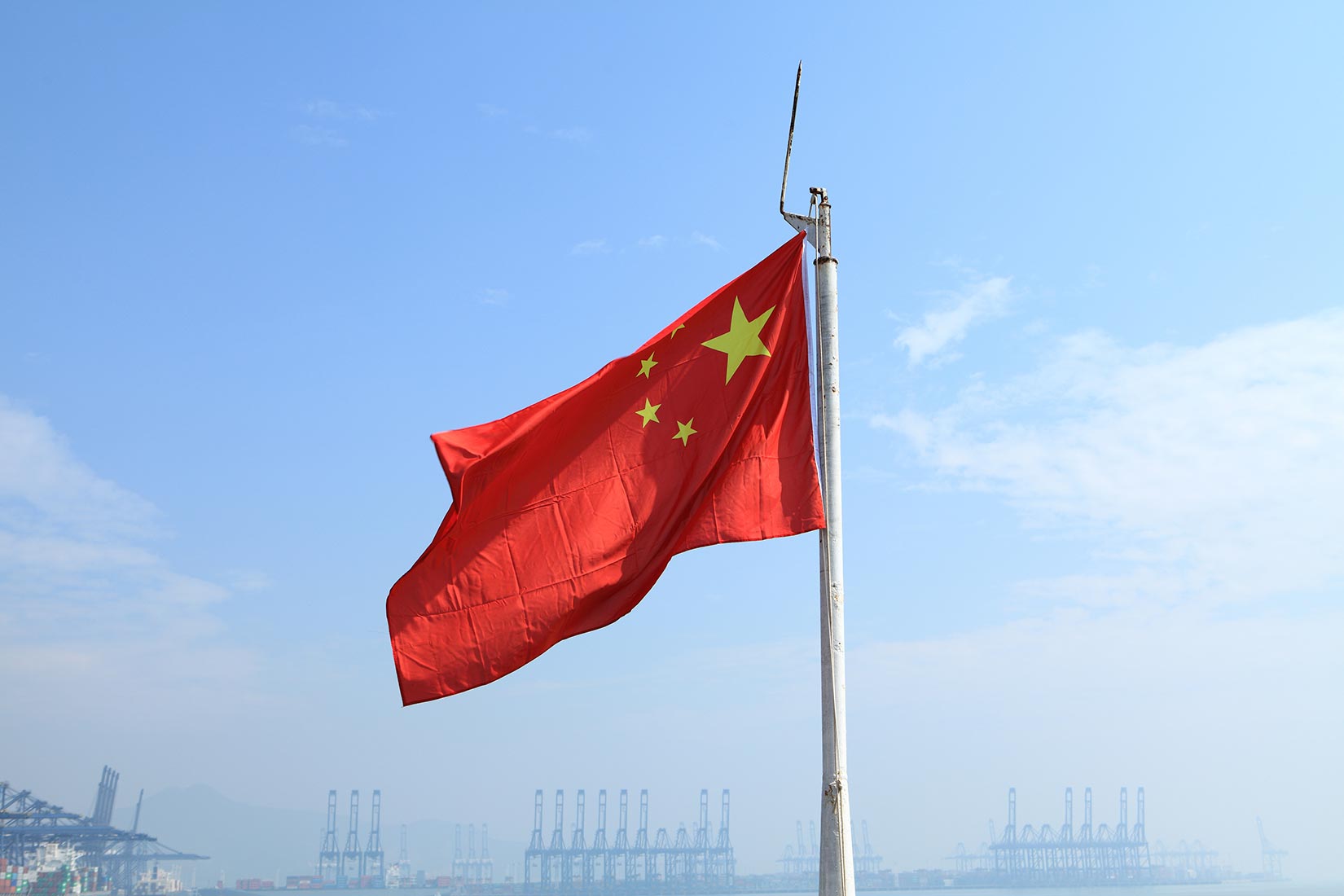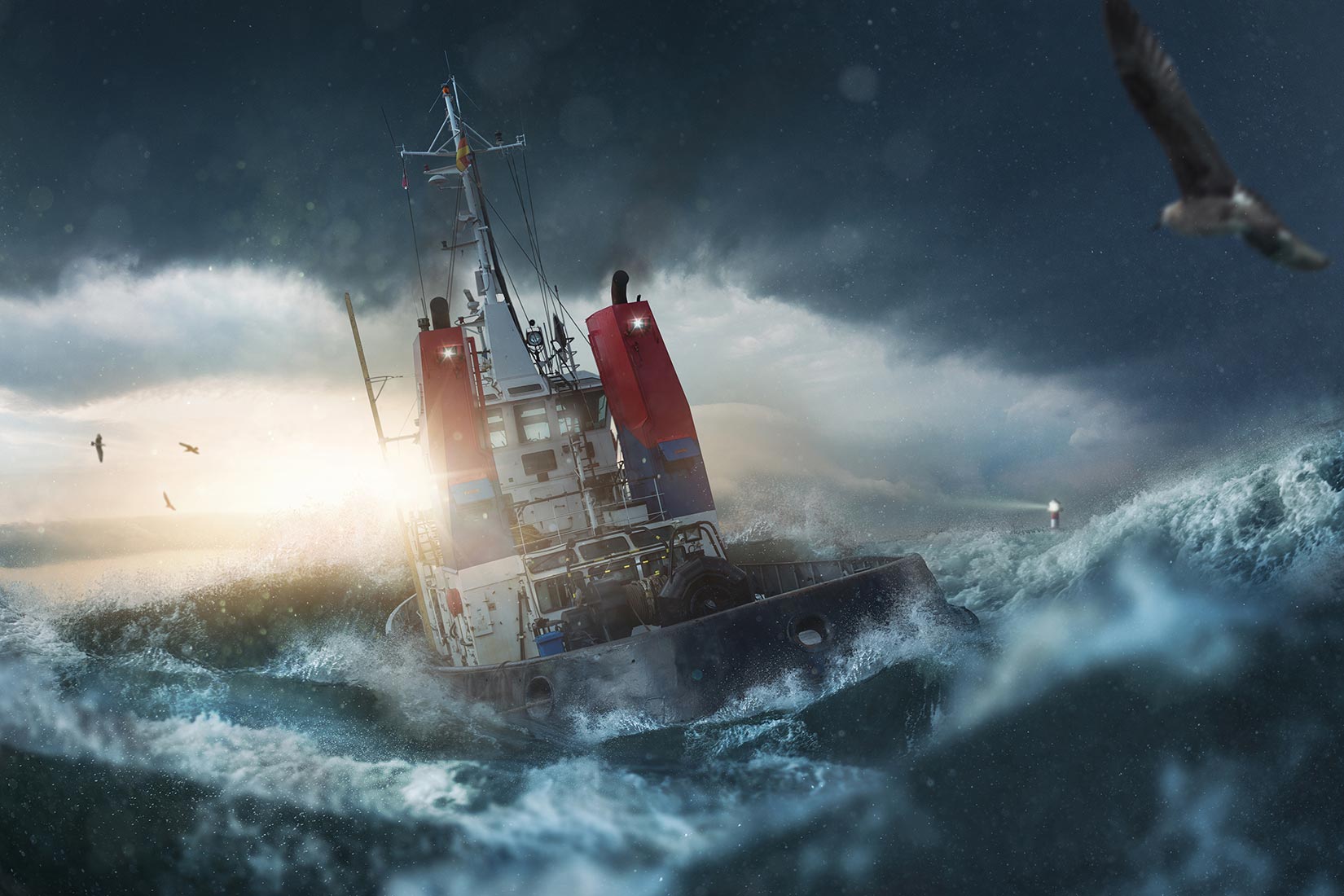A new law covering the activities of the China Coast Guard (CCG) came into effect on February 1. Many questions and concerns with the law have emerged from international community since the initial draft was released in November 2020. With the law now formally in effect, this article will discuss the international community’s concerns about the CCG, particularly the fact that it is a part of the People’s Armed Police (PAP).

Differences from the draft – the missing “maritime armed force” and others
Although the final version of the law is slightly different from the initial draft, there were no changes that would significantly alter the character of the law. Based on that, I will make several observations in this article.
1) The missing “海上武装力量 (maritime armed force)”
Article 2 of the China Coast Guard Law defines the characteristics of the CCG. There, the term “海上武装力量 (haishang wuzhuangliliang),” which indicates the CCG is a part of China’s naval forces and was present in the initial draft, has disappeared. However, this does not mean that China has dropped the idea that the CCG is a part of its armed forces.
The Constitution, National Defense Law, and People’s Armed Police Law, which are all superordinate to the China Coast Guard Law, clearly state that the PAP is a part of the armed forces, and the opening of the coast guard law describes “人民武装警察部队海警部队 (the PAP’s Coast Guard).” It logically follows that the CCG is a military force. More specifically, domestic law clarifies that it is a force under the Central Military Commission, which is independent from the State Council, the chief administrative authority in China’s central government. Some international commentators have described the CCG as “paramilitary,” but the laws of the People’s Republic of China stipulate that the People’s Liberation Army, the Chinese Militias and the PAP – and with it the CCG – are each equally the country’s armed forces. Accordingly, it is clear that from China’s perspective that the CCG is not “an organization that conforms to a military force,” but rather an “unmistakably military force”[1]. Its missions are “non-war military operations in peacetime, and defense operations in wartime.” Based only on this text, one may confuse this for a discussion about Japan’s Maritime Self-Defense Force, but they are the missions of the CCG.
If the motive behind the removal of the phrase “maritime armed force” was to soften China’s image in response to concerns from the international community, it could be said to be the result of modest strategic communications.
2) The Chinese word “安全” for both “safety” and “security”
Next, Article 5 spells out the CCG’s basic mission. The draft law initially listed the “维护海上治安秩序 (to maintain maritime public security and order),” but the final version was changed to “开展海上安全保卫.” However, in Chinese “安全 (anquan)” is an ambiguous term that can be interpreted as both “safety” (e.g., navigation safety) and “security” (e.g., national security). On top of that, “保卫 (baowei)” can also be interpreted to mean both “to protect” traffic safety and “to defend” the nation. If the order of these statements indicates the mission priorities, the intentions of the lawmakers who replaced them should be kept in mind.

3) Cooperation with relevant organizations and the superiority of the CCG
Article 8 lays out the establishment of a framework for cooperation and coordination with the State Council, local governments and other relevant organizations, a mechanism that was not in the draft law. This measure is to ensure the provision of logistics and support information required of relevant administrative departments and people’s courts under Articles 53 and 58. It can be seen as signifying the leadership and superiority of the CCG over the administrative and judicial organizations.
4) Increasingly vague “jurisdictional waters”
In addition to these changes, the definition of “jurisdictional waters” in the draft’s supplementary provisions disappeared, making the term vaguer.
Looking at China’s assertions to date, it is clear that “jurisdictional waters” as viewed by China is intended to include parts of the East China Sea west of the Okinawa Trough, as well as the area inside the Nine-dash line. In other words, almost everywhere inside the so-called “first island chain.” China’s claims to these “jurisdictional waters” differ greatly from maritime claims made by Japan and other neighbors. Many of China’s claims have been denied by international arbitration, and are unilateral assertions that are not recognized by the international community.
In addition, the National Defense Law was revised in December 2020 to state that along with sovereignty, unification and territory, “发展利益 (fazhan liyi; development interests)” are to be protected through military action[2]. The definition of these “development interests” is as vague as that of “jurisdictional waters.” Other countries cannot help but be suspicious of these “development interests” and “jurisdictional waters,” which are open to arbitrary interpretation.
There is little dispute to the idea that this law “challenges the Westphalian paradigm itself, which is the foundation of international law,”[3] in the words of Captain Toshinari Matsuo, Director of the Operational Law Office at the JMSDF Command and Staff College.
A challenge to the Westphalian paradigm: the CCG as a part of the PAP
There are many possible reasons why the status of the CCG poses a challenge to existing international rules and orders, including Chinese history and thought processes[4], but one of the main reasons is that the new CCG, which was created as an integrated maritime law enforcement organization, became a part of the PAP, which has a completely different mission and operates in different fields.
The main mission of the PAP is to respond to sudden social disturbances and terrorism[5]; that is to be a military force prepared to counter the “internal enemies” of the People’s Republic of China Regime under the leadership of the China Communist Party, such as domestic riots and uprisings. It mainly operates within China’s sovereign territory, where it is free of outside interference. Although revisions to the People’s Armed Police Law last year placed the CCG at the same levels as the Internal Guard Corps and the Mobile Contingents, the PAP’s main units, the law only superficially addressed the CCG. Specific provisions did not exist until the recently enacted China Coast Guard Law.
The CCG, in contrast, operates mainly in the open seas, as previously stated. Even in territorial waters, certain rights are guaranteed to other countries, and it is not accepted that the coastal state has absolute sovereignty. On top of this, China-flagged fishing vessels and commercial ships can now be strictly controlled through China’s own satellite navigation and communication system, Beidou[6], so it is easy to imagine that most of the targets of the CCG’s activities will be foreign-flagged vessels. They are, it may be said, “external enemies” who harm China’s “海上安全 (maritime safety)”[7].
China’s Ministry of National Defense and other agencies teach soldiers and officers that not only China’s territorial waters, but also its continental shelf and exclusive economic zone are all China’s “染色国土 (ranse guotu; Blue National Territory)”[8]. This is likely the source of Chinese society’s understanding of “jurisdictional waters.” The CCG will naturally generate friction with the existing rules of the international order if it operates in the open seas with the organizational culture of a military force facing an “internal enemy.”

Internal versus external “维权 (right protection)”
There is one additional division between the CCG and the PAP – in the China Coast Guard Law, the phrase “维权执法 (weiquan-zhifa; right protection and law enforcement)” appears frequently.
This phrase is a new Chinese term that appeared after 2002. The concept still has not yet been firmly established, even among experts, such as academics in China[9]. That is why the phrase appears frequently in the China Coast Guard Law, but the term “维权” is present only four times in the People’s Armed Police Law, all of which are in the context of the CCG. Incidentally, there is no mention of “维权” in the People’s Police Law, which governs police and law enforcement activities (and, mutatis mutandis, the law enforcement actions of the CCG and PAP) in China.
Looking at the Chinese internet community, it is clear that “维权律师 (rights protection lawyer),” referring to “human rights lawyers,” was originally a term used exclusively by the public in the context of “protecting individual rights and basic human rights.” Put differently, to the PAP it was a term used by “internal enemies.”
In the process of strengthening the CCG and increasing its naval power, it is becoming clear that “维权 (weiquan)” no longer means “guaranteeing individual rights,” but rather “protecting China’s national rights and interests.” I have previously touched on this in a discussion about the Senkaku Islands and their place in the conflict over humanitarianism between China and the international community [10].
Conclusion
If the logic of domestic law aimed at “internal enemies” is applied unchanged to the oceans, which are governed by international law, friction will naturally occur between China and the rest of the world.
The activities of the PAP in fully sovereign Chinese territory are quite difficult to monitor, even for foreign individuals and organizations that have entered China with permission. However, China does not have the right to deny neighbors and the rest of the world from confirming and monitoring – as permitted under international law – the activities of the CCG in the global common of international waters.
With the China Coast Guard Law coming into effect, it is easy to imagine the CCG, now backed by domestic regulations, will become even more active. All of the international community must watch its activities closely, firmly and clearly point out every challenge to existing international rules, and take action in accordance with international rules as necessary.
*The opinions expressed do not reflect the assessments of MOD or JSDF.
(2021/02/25)
Notes
- 1 Katsuya Yamamoto, “The Chinese Coast Guard as a Part of the China Communist Party’s Armed Forces,” International Information Network Analysis, Sasakawa Peace Foundation, December 10, 2020.
- 2 Article 2, National Defense Law of the People’s Republic of China.
- 3 Matsuo’s paper discusses the divergence of the CCG from general international law with regard to the sovereign immunity of warships and other vessels under the flag state principle.Toshinari Matsuo, “Publication of the Draft of the China Coast Guard Law: Unique Provisions for the Use of Force Against Foreign Warships,” JMSDF Command and Staff College Review, column 182, December 9, 2020. (Japanese).
- 4 cf. Chisako Masuo, Principles of Chinese Behaviors: International Relations decided by Domestic Social Tyde, Chuokoron-Shinsha, 2019.
- 5 Article 4, Law of the People’s Republic of china on the People’s Armed Police.
- 6 Fisheries, Beidou Satellite Navigation System. (Chinese)
- 7 It may be appropriate to add that Chinese vessels engaged in activities seen as illegal or illegitimate by other countries are also controlled by Chinese authorities, and those activities cannot occur without instructions from, or at least the tacit approval of, authorities.
- 8 Katsuya Yamamoto, “China as Seen by a Defense Attaché (pt. 10), China’s Maritime Territory, International Waters and International Airspace,” JMSDF Command and Staff College Review, column 021, January 12, 2012. (Japanese)
- 9 Mao Chenyu, “The Definition and Future Prospects of the Concept of ‘Rights Protection,’” Ocean Daily, June 20, 2020. (Chinese)
- 10 Katsuya Yamamoto, “The Senkakus are the Frontline in Conflict of Values over Humanitarianism between China and the World,” International Information Network Analysis, Sasakawa Peace Foundation, September 9, 2020. (Japanese)

